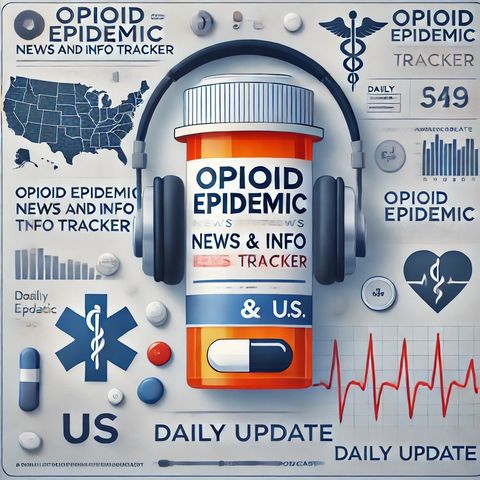"Combating the Persistent Opioid Epidemic: A Comprehensive Public Health Approach"

Sign up for free
Listen to this episode and many more. Enjoy the best podcasts on Spreaker!
Download and listen anywhere
Download your favorite episodes and enjoy them, wherever you are! Sign up or log in now to access offline listening.
"Combating the Persistent Opioid Epidemic: A Comprehensive Public Health Approach"
This is an automatically generated transcript. Please note that complete accuracy is not guaranteed.
Description
## The Opioid Epidemic: A Persistent and Devastating Public Health Crisis The opioid epidemic continues to be one of the most severe public health crises in the United States, affecting...
show moreThe opioid epidemic continues to be one of the most severe public health crises in the United States, affecting millions of lives and straining the healthcare system across the country.
### Scope and Impact
Between 1999 and 2017, nearly 400,000 people in the U.S. died from opioid-related overdoses, highlighting the epidemic's staggering toll. In 2018 alone, 10.3 million people misused opioids, including prescription opioids, heroin, and synthetic opioids like fentanyl.
The economic burden of the opioid crisis is equally alarming. In 2017, the total economic cost of the epidemic was estimated at $684.6 billion, which is approximately 3.5% of the nation's GDP. This includes costs related to lost lives, productivity, emotional strain, and increased spending on healthcare, social services, and criminal justice.
### Disparities and Vulnerable Populations
The opioid epidemic does not affect all populations equally. Black/African American communities are particularly hard hit, with Maryland reporting the highest number of opioid-related overdose deaths among non-Hispanic Blacks. This community faces unique challenges, including limited access to prescription opioids due to biases in the healthcare system, which can lead to a higher reliance on illicit drugs like heroin and fentanyl-laced substances.
### Causes and Contributing Factors
The opioid epidemic is multifactorial, driven by several key factors. The overprescription of opioids, fueled by aggressive marketing campaigns and the introduction of extended-release oxycodone (OxyContin), played a significant role in the crisis. Initiatives from the Joint Commission emphasizing patient satisfaction and the labeling of pain as the "5th vital sign" also contributed to the surge in opioid prescriptions.
### Treatment and Prevention Efforts
Addressing the opioid epidemic requires a comprehensive approach that goes beyond just reducing the supply of opioids. While restricting prescriptions and implementing physician drug monitoring programs are necessary, they are not sufficient on their own. There is a critical need for comprehensive evaluations in emergency departments, including risk assessments for suicidal ideation, as many opioid overdoses may be unrecognized suicide attempts.
Medication-Assisted Treatment (MAT) is an essential component of treatment, but it must be combined with evidence-based behavioral therapy. Methadone has shown superior abstinence rates, safety, and treatment retention compared to other MAT options
Information
| Author | QP-4 |
| Organization | William Corbin |
| Website | - |
| Tags |
Copyright 2024 - Spreaker Inc. an iHeartMedia Company
